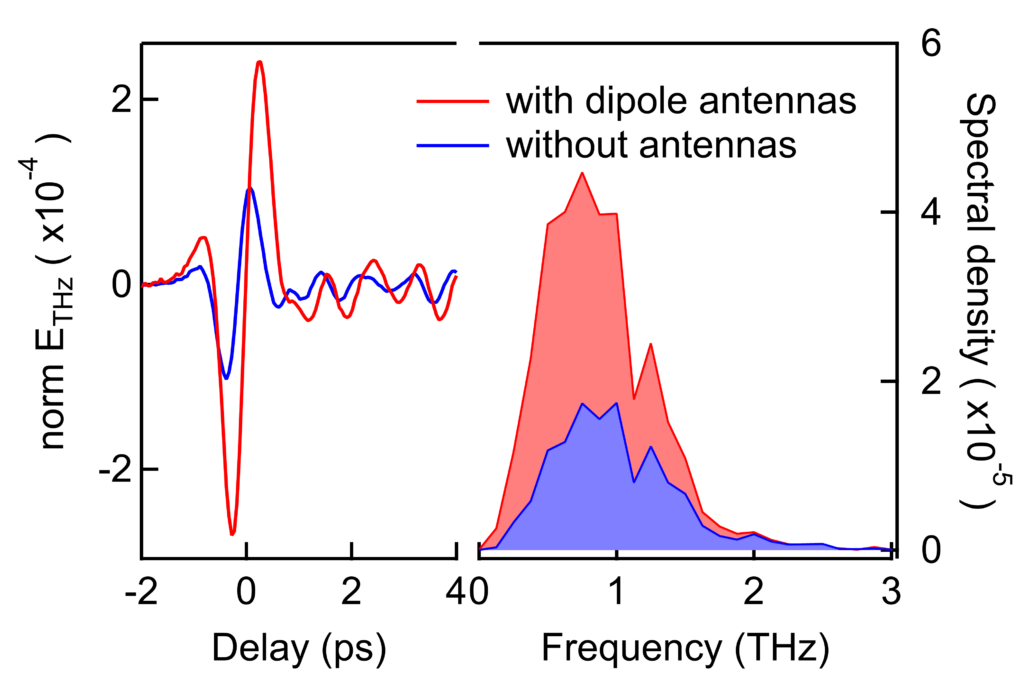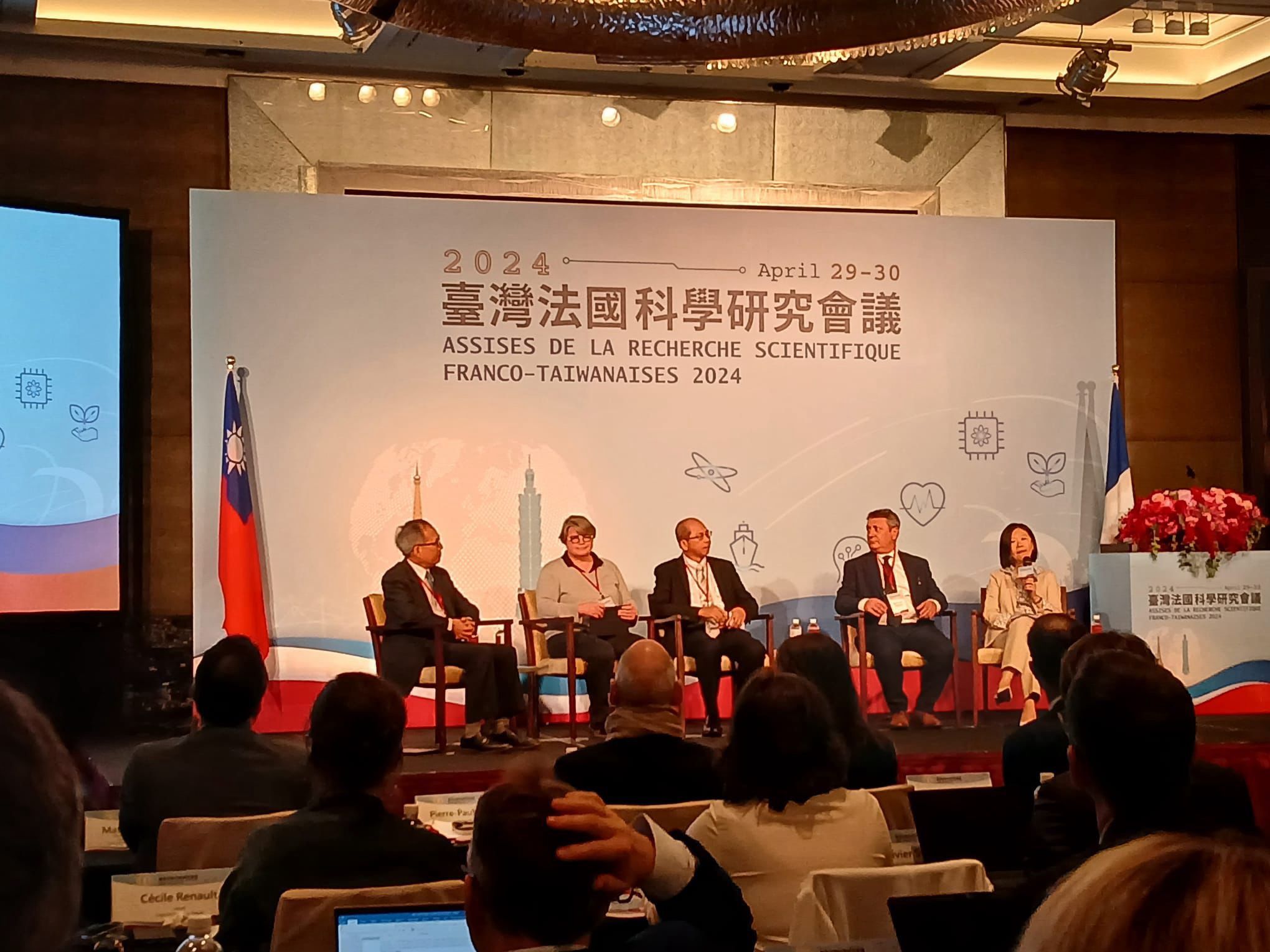#LePapierDuMois | July 2024: Reducing energy consumption through future high-frequency telecommunications devices
Researchers from the Institute of Physics and Chemistry of Materials in Strasbourg (IPCMS) and the Jean Lamour Institute in Nancy, members of the TOAST Targeted Project, have studied the emission of terahertz waves from spintronic structures coupled with various types of antennas (dipole, bow-tie, and spiral). The researchers have shown that the far-field terahertz emission from the emitters can be enhanced by optimizing these antennas by up to a factor of 15, as detailed in the paper “Increasing terahertz spintronic emission with planar antennas.”
The terahertz window is a frequency range within the electromagnetic spectrum typically defined as ranging between 0.1 and 10 THz, positioned between microwaves and infrared radiation. This frequency range coincides with a wide variety of physical phenomena spanning the fields of condensed matter physics and life sciences, among others. However, generating and detecting terahertz waves remain challenging, despite significant advances in recent years. The most practical broadband techniques involve indirect methods in the time domain, relying on femtosecond laser pulses and their conversion in nonlinear crystals (optical rectification). Another more recent method of terahertz emission is based on ultrafast demagnetization of magnetic materials using femtosecond laser pulses in spintronic structures composed of magnetic/non-magnetic metal multilayers.


Figure 1 Left: Diagram of the THz emission from a single spintronic emitter equipped with an electromagnetic antenna. The inset illustrates the spin-polarized current (JS) through the structure and its conversion into transverse charge current (JC). This oscillating charge current leads to terahertz emission in free space.
Right: The electric field of THz pulses measured for arrays of spintronic terahertz emitters with or without dipole antennas (red and blue, respectively) and their Fourier transforms.
In this context, it is important to understand how to effectively convert local spintronic terahertz emission into radiation in free space. In this study, researchers explored the impact of antenna geometry coupled with spintronic emitters by comparing various antenna designs, optimized in size through numerical simulations. Microstructures fabricated via lithography were examined using an optical pump-probe setup in a microscopic configuration to address the terahertz emission from individual emitters.
These results contribute to the studies of high-frequency emitters with reduced energy consumption, and will ultimately enable miniaturization and integration into future high-frequency telecommunications devices.
Co-autors: Matthias Pacé, Oleksandr Kovalenko, José Solano, Michel Hehn ,Matthieu Bailleul, Mircea Vomir


